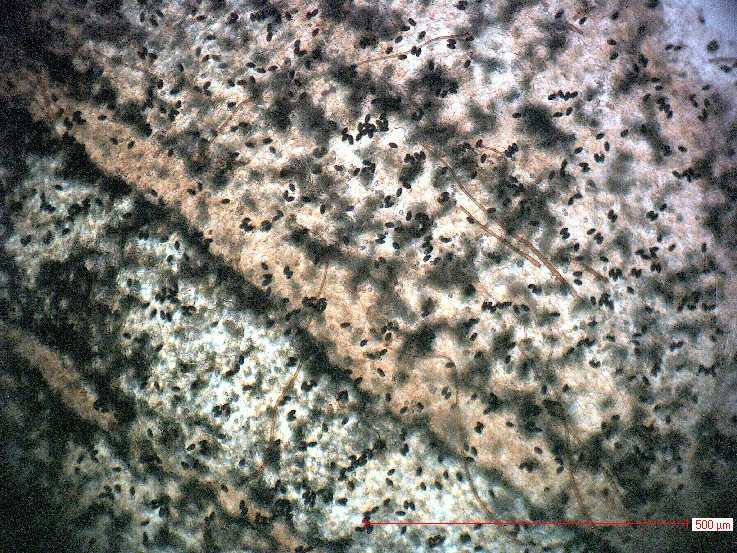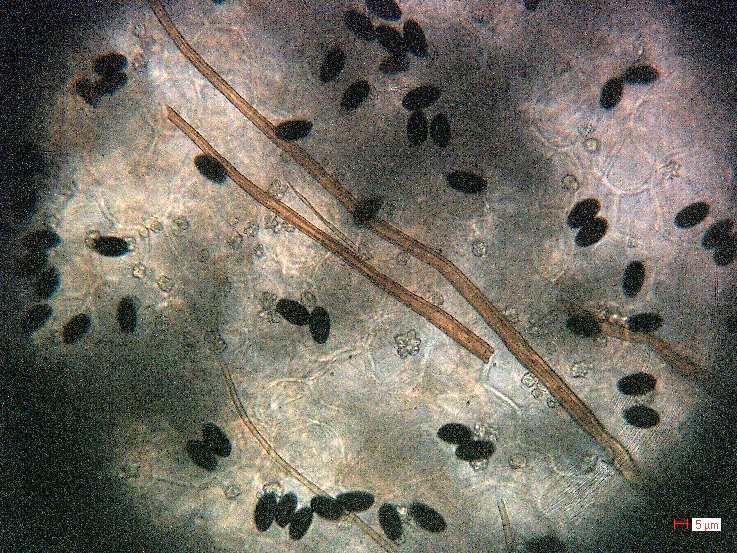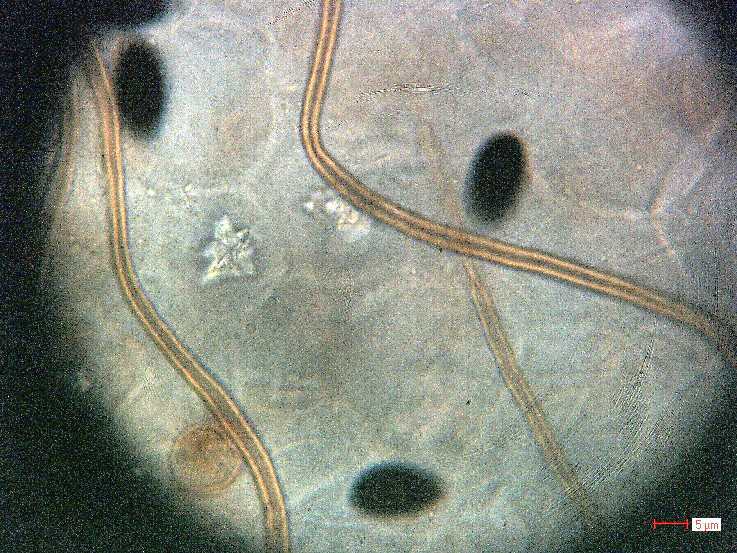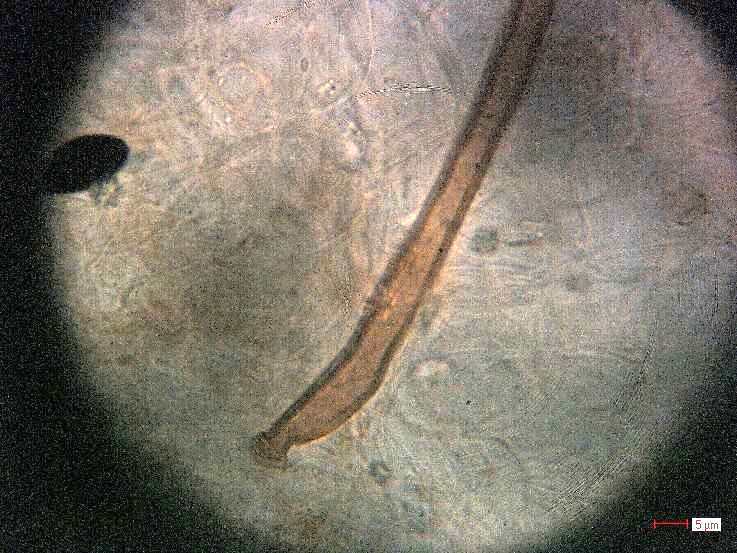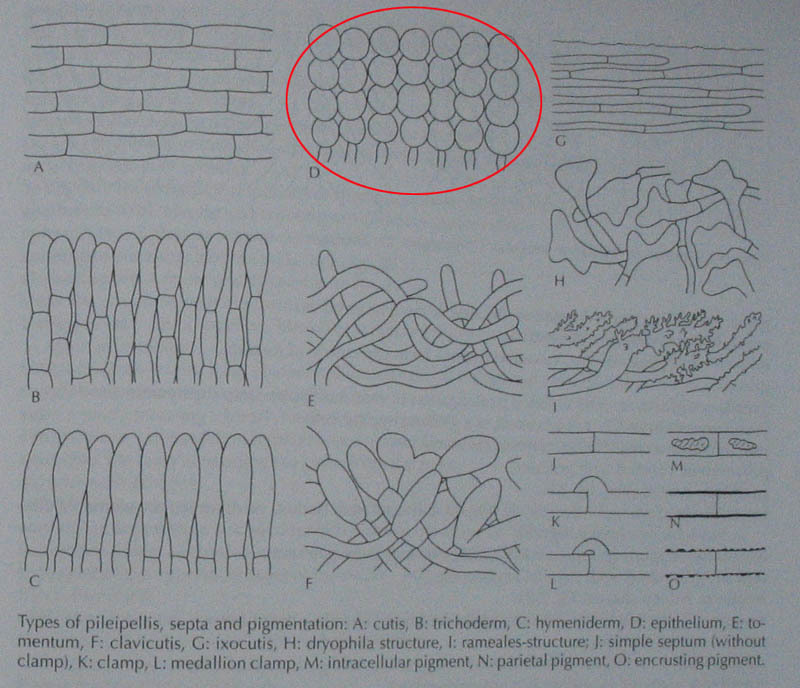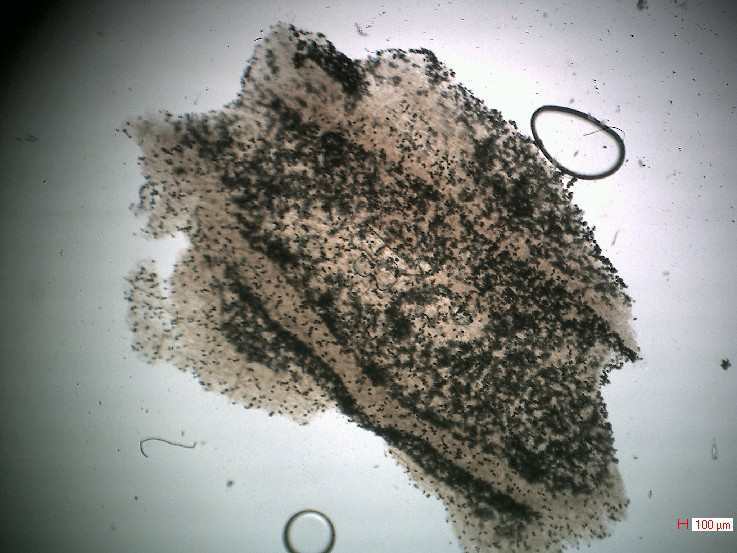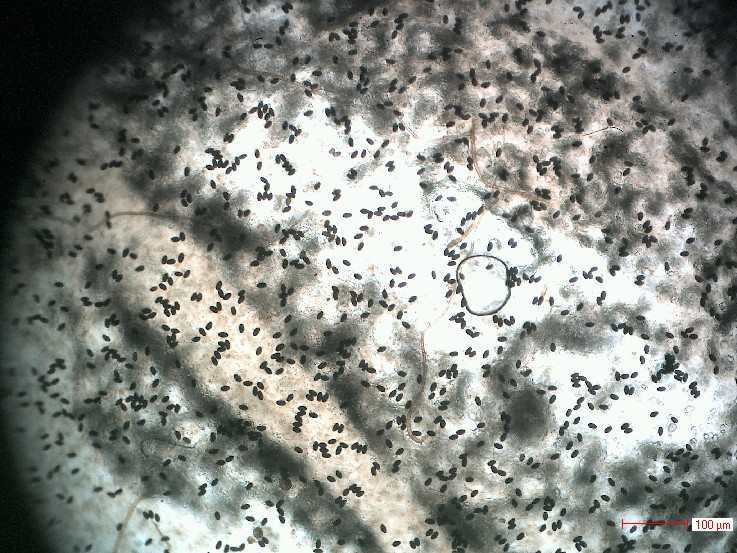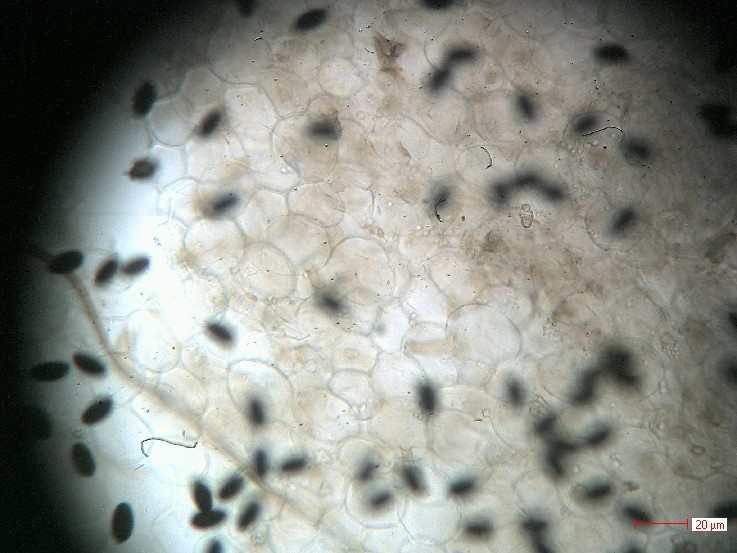Znalezisko z 26.10.2014, z buczyny.
Cechy, jakie zaobserwowałam pasują mi do opisu Psathyrella conopilea, jaki tu podaję ściągnięty z mushrooobserver, bo to najszybciej było mi przekleić do wątku.
Z opisem z innych źródeł (np. Funga Nordica) dopiero porównam.
Po cechach makro typowałam tytułowy gatunek, a mikro miało na celu sprawdzenie, czy cechy pasują.
http://mushroomobserver.org/92287
cytuję: "/.../ the first micro-shot is of the gill edge at 400x in KOH. The cheilocystidia are lageniform, on a non-fertile edge. Also seen was 4-spore basidia, with a few 2 and 3 spored basidia obs. No pleurocystidia were obs.
The second micro-shot is of the cap surface at 400x in KOH. The cap surface is an epithelium, with long narrow setae, with thick pigmented cell walls.
The third micro-shot is of spores from the gill at 1000x in KOH. The spores are ellipsoid, smooth, dark grey, with a clear germ pore. The apr. ave. size is 17 × 9 um, with a 2 um wide germ pore.
With the very large spores, and no pleurocystidia, this is rather clearly P. conopilus. The cap setae are a nice feature to have also./.../"
Z powyższym opisem jedynie różnica taka, że ja suszka odmaczałam w NH4OH.
Kolejno foty:
makro z siedliska + makro suszków
mikro kolejno:
- cystydy (obiektyw x40) na ostrzach blaszek (na blaszkach cystyd brak)
- zarodniki (obiektyw x100) (duuuże) z porą rostkową i ich rozmiary (pora rostkowa wielka jak wół ;-) nie było żadnego problemu z dostrzeżeniem jej :-) )
- sety (obiektyw x100 dwie foty) na skórce kapelusza
Czy to wystarczy, by potwierdzić typowany gatunek?
Dodam, że podstawki - 4-zarodnikowe.
Z powyższego opisu nie rozumiem na razie jednego The cap surface is an epithelium.
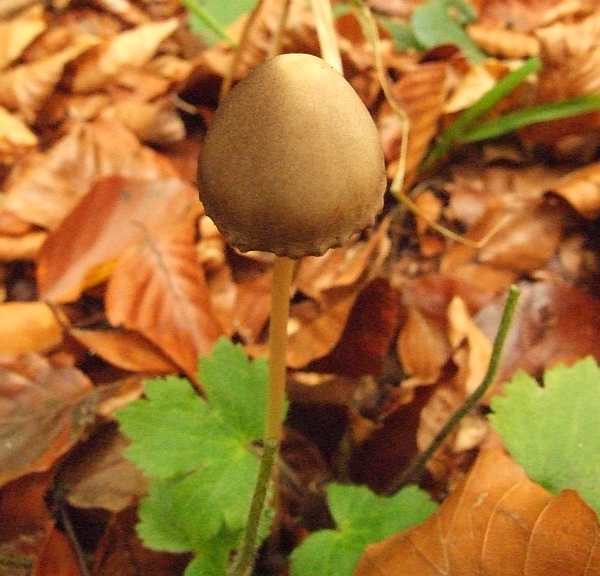
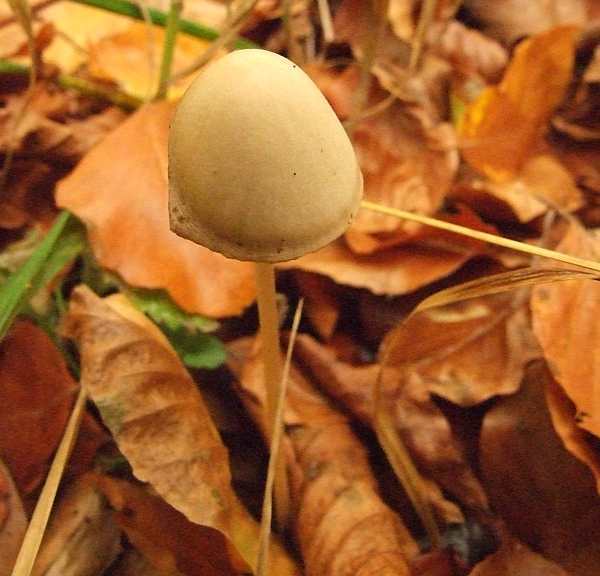
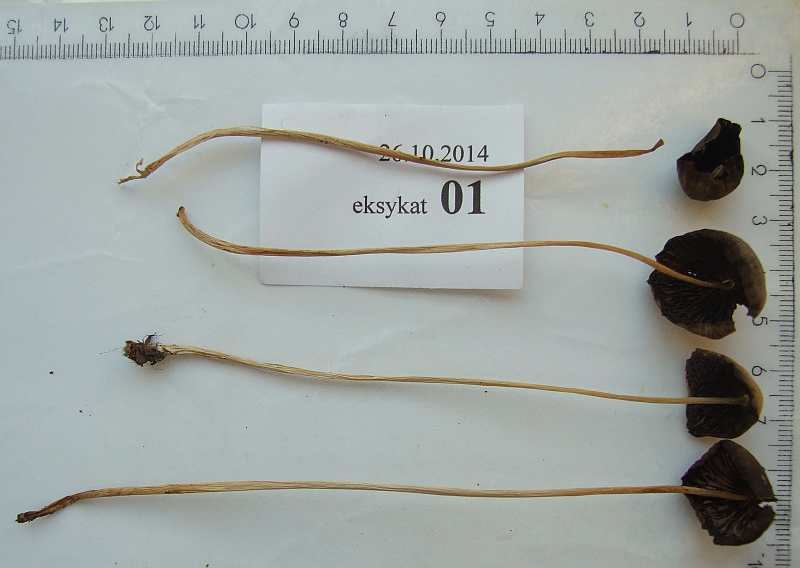
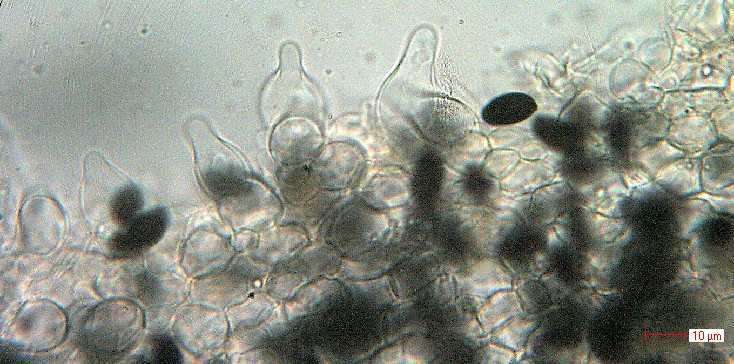
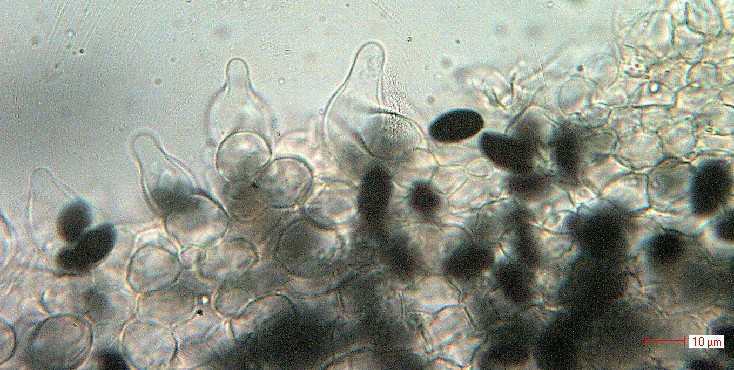
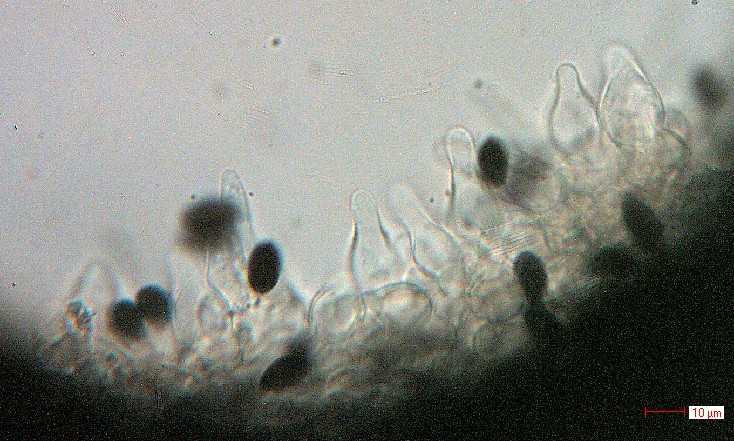
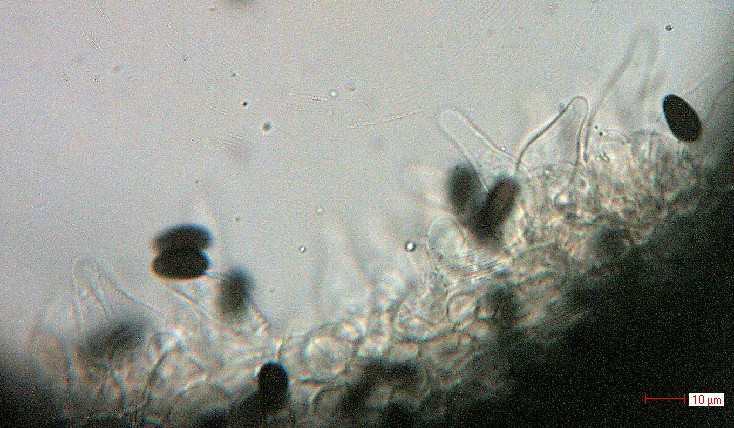
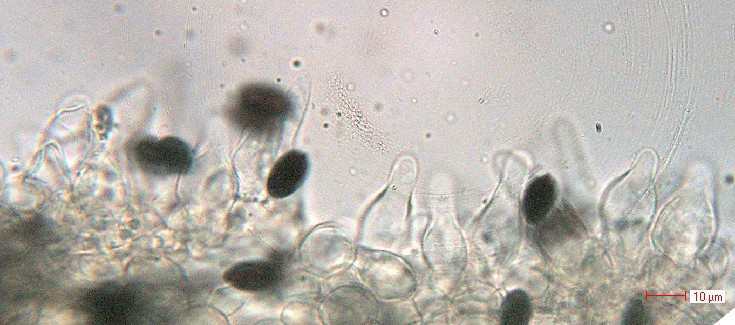
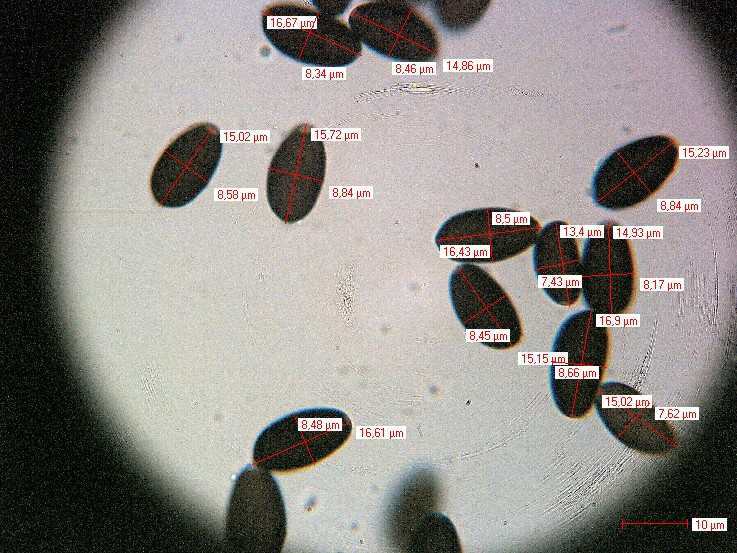
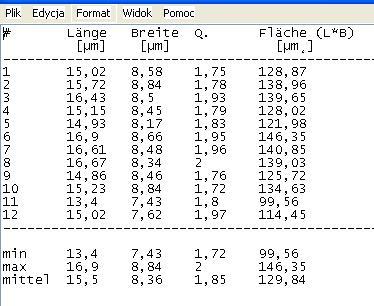
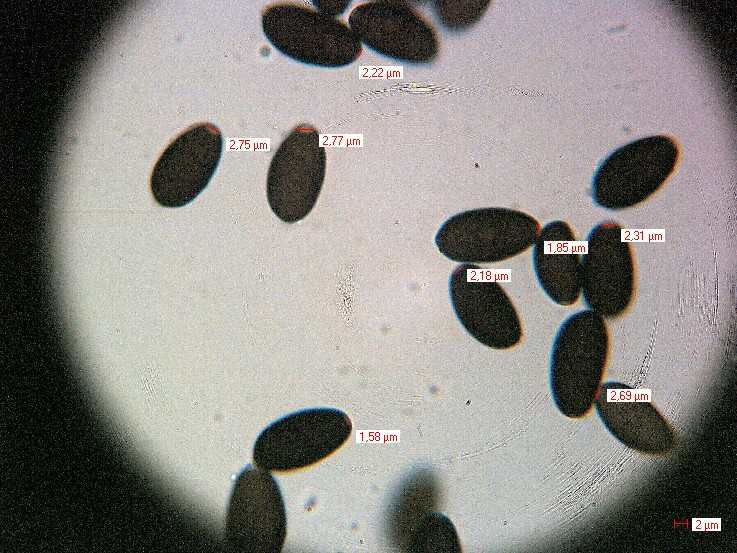
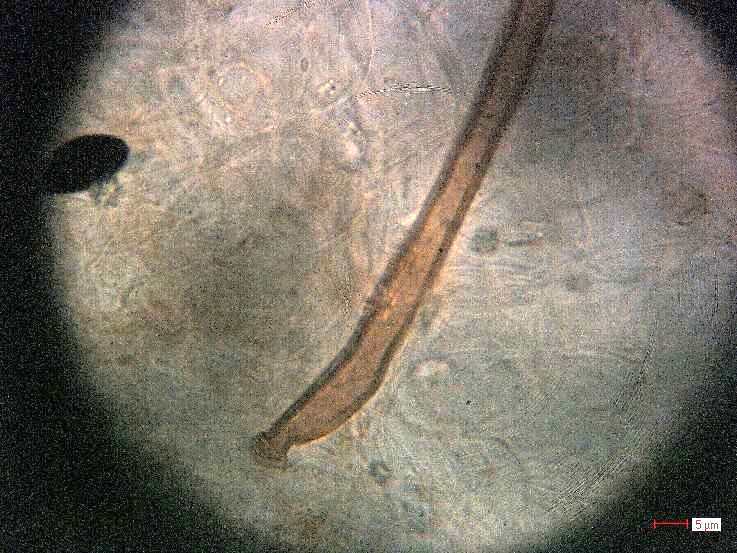
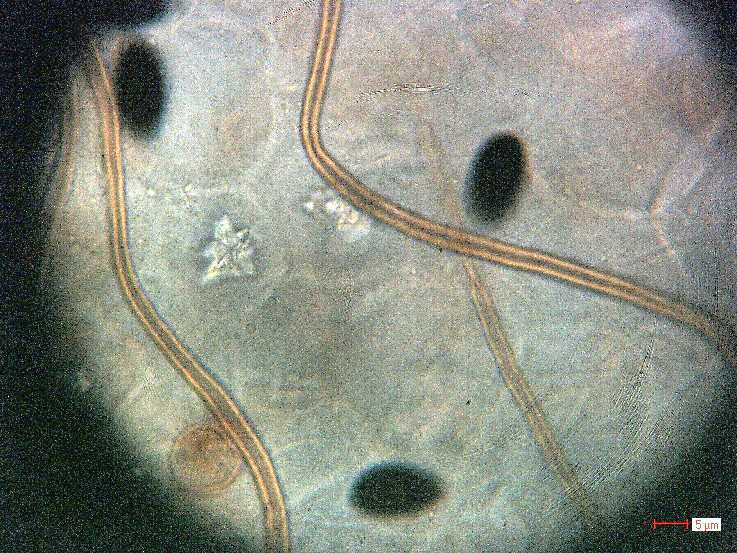
(wypowiedź edytowana przez topazzz 30.listopada.2014)
Cechy, jakie zaobserwowałam pasują mi do opisu Psathyrella conopilea, jaki tu podaję ściągnięty z mushrooobserver, bo to najszybciej było mi przekleić do wątku.
Z opisem z innych źródeł (np. Funga Nordica) dopiero porównam.
Po cechach makro typowałam tytułowy gatunek, a mikro miało na celu sprawdzenie, czy cechy pasują.
http://mushroomobserver.org/92287
cytuję: "/.../ the first micro-shot is of the gill edge at 400x in KOH. The cheilocystidia are lageniform, on a non-fertile edge. Also seen was 4-spore basidia, with a few 2 and 3 spored basidia obs. No pleurocystidia were obs.
The second micro-shot is of the cap surface at 400x in KOH. The cap surface is an epithelium, with long narrow setae, with thick pigmented cell walls.
The third micro-shot is of spores from the gill at 1000x in KOH. The spores are ellipsoid, smooth, dark grey, with a clear germ pore. The apr. ave. size is 17 × 9 um, with a 2 um wide germ pore.
With the very large spores, and no pleurocystidia, this is rather clearly P. conopilus. The cap setae are a nice feature to have also./.../"
Z powyższym opisem jedynie różnica taka, że ja suszka odmaczałam w NH4OH.
Kolejno foty:
makro z siedliska + makro suszków
mikro kolejno:
- cystydy (obiektyw x40) na ostrzach blaszek (na blaszkach cystyd brak)
- zarodniki (obiektyw x100) (duuuże) z porą rostkową i ich rozmiary (pora rostkowa wielka jak wół ;-) nie było żadnego problemu z dostrzeżeniem jej :-) )
- sety (obiektyw x100 dwie foty) na skórce kapelusza
Czy to wystarczy, by potwierdzić typowany gatunek?
Dodam, że podstawki - 4-zarodnikowe.
Z powyższego opisu nie rozumiem na razie jednego The cap surface is an epithelium.













(wypowiedź edytowana przez topazzz 30.listopada.2014)

